An A to Z of the Chiswick House Archives: L is for Limes
In the latest in our A-Z series, volunteer archivist Cluny Wells has researched the origins of our magnificent avenue of lime trees.
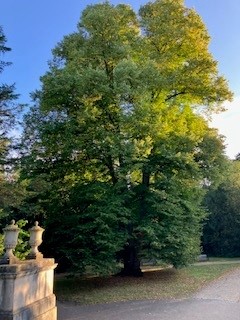
Why are lime trees planted in avenues?
The lime trees within Chiswick Gardens, particularly in Duke’s Avenue, caught my eye largely because they seem to be deliberately planted in avenues or groups. I wondered why limes were so special or interesting and why they were chosen? There are approximately 1,600 trees across the 65-acre Gardens so why were lime trees chosen for the avenues? I felt I needed to know more about this tree, which can leave a sticky mess if you make the mistake of parking underneath them, and I wanted to find out about avenue planting. I found out that the lime tree variety, tilia x europea – the common lime, has been used most in the grounds of Chiswick and is also popular as an urban street tree. It is also known as the Dutch lime, the European lime and the Linden tree. It is a hybrid tree.
A brief history of Chiswick avenues
One of Lord Burlington’s earliest designs in the Grounds was the patte d’oie, built around 1717. A 1724 map of the grounds shows a ‘Lime Walk’ along the middle path, which had been there since the 1600s when it had been fashionable to plant avenues of trees like limes, but not so much by the 18th century. Burlington removed the Lime Walk soon after 1724.
After the Chiswick Enclosures Act of 1814, Lord Burlington’s great grandson, the 6th Duke of Devonshire, extended the road (now known as Duke’s Avenue) from inside the grounds to a road leading up to Turnham Green/Chiswick High Road which is now on the other side of the A4. This road gave the Duke more privacy on the approach to the entrance of the House and Gardens, and to enable his guests’ carriages to reach Chiswick House more easily.
Sarah Couch has said:
An avenue could be seen as a symbol of control over the landscape and its inhabitants; an expression of ownership and power.
According to local historian David Jacques, although the Chiswick Avenues survive today, the trees have probably been replanted as one of the trees has a ring count that dates it to 1901, meaning replanting took place in the time of the Tukes. Jacques also stated that the Avenue was extended from the Corney Road gate to the A316 gate in the 1950s when more limes were planted there.
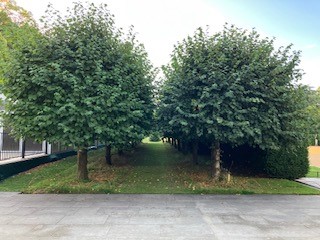
Why were lime trees chosen?
By 1717 the lime was used more than any other tree in England. Some reasons why they were favoured (and continue to be valid today) include:
- Timber production is not a prime consideration for limes.
- They grow straight and tall
- They are long-lasting
- They propagate easily by the layering method and grow over where pruned
- They are resistant to wind damage with tough bark
- Their value to wildlife include producing leaves that are eaten by many moth species, they are attractive to aphids, and in turn to their predators such as ladybirds, hoverflies and birds. They produce beautiful flowers which provide nectar for bees.
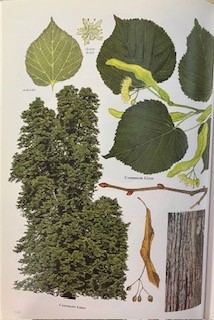
Chiswick limes today
When the decision was made to replant the Grove in recent years, lime was again the choice of tree.
I did a count of the lime trees in the grounds, concentrating on those in avenues (excluding the lone specimens and those found in the car park). I counted 240 lime trees in the grounds, mainly in avenues and the Grove. There were a further 88 lime trees in Dukes Avenue, now on the other side of the A4 going towards the High Road – which is no longer part of Chiswick House and Gardens. All these limes appear to be Tilia x europaea (common lime).
The gardeners’ database has recorded 349 lime trees in the grounds, which includes the car park trees which are a different variety – Tilia tomentosa (silver lime). Some are ‘notable trees’ (100-175 years old) or even possibly ‘Veteran trees’ (150-200 years old) as well as young limes.
The map below shows where the most obvious limes exist in the Gardens.
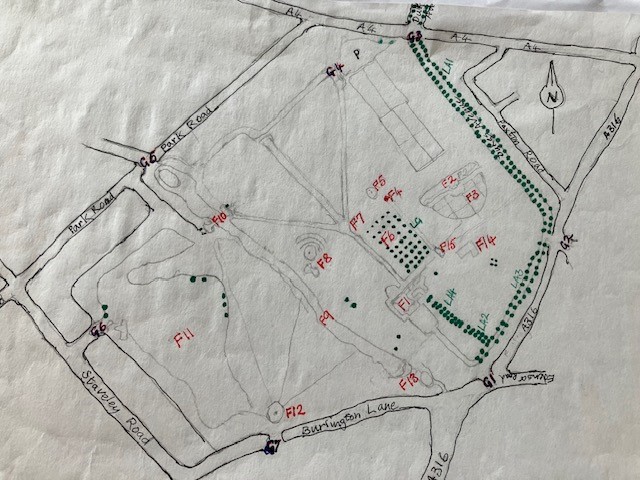
KEY TO THE MAP
Features – F; Gates – G; Lime Avenues – LA; Lime Grove – LG:
F1 the Villa F2 the Conservatory F3 the Italian Garden F4 the Deer House
F5 Doric Column & Rosary F6 the Grove F7 the Patte d’oie F8 the Ionic Temple
F9 the Lake F10 Classic Bridge F11 Cricket Pitch
F12 Obelisk & Patte d’oie F13 the Cascade F14 the Café
F15 Inigo Jones Gate
G1 A316 gate G2 Corney Road gate G3 Duke’s Avenue gate
G4 Rustic House gate G5 Park Road gate G6 Staveley Road gate
G7 Burlington Lane gate
LA1 lime avenue from G2 to G3 (90) LA2 lime avenue [pollarded] (20)
LA3 lime avenue planted in 1950s (43) LA4 lime avenue [ghost] (16)
LG lime grove (55) Solitary limes in the grounds (15)
A lime tree can grow up to 50 metres tall and have a girth of five metres or more, especially if classed as an ‘Ancient’ specimen. The Woodland Trust lists the characteristics of ancient lime trees, which are apparently a better indication of age than size.
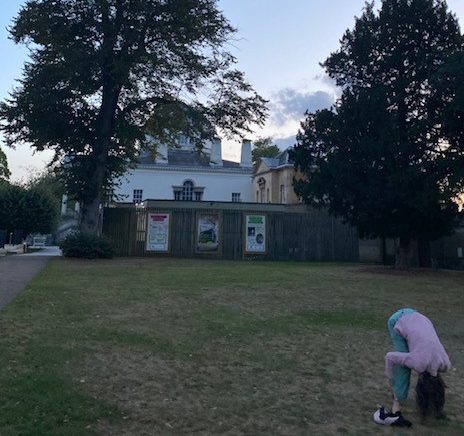
How to measure the height of a tree
- Stand at base of tree, facing out with your back to the tree
- Walk forward away from the tree, bend over & look through your legs up at tree
- Keep walking & looking through legs at the tree, until you can see the top. STOP.
- Measure the distance from where you have stopped back to the base of tree.
History and folklore of the lime tree
Also known as a linden tree, the lime tree has appeared in ancient stories and poems, and was mentioned by Horace, Virgil and Pliny. The linden tree was thought to have mystical or even sacred powers. In Slavic languages the word for linden is ‘Lipa’ and in Poland many villages have the name ‘Swieta Lipka’ which means ‘Holy Lime’. In Germany it is known as the ‘the tree of lovers’. One of the most notable streets in Berlin is ‘Unter den Linden,’ named after the lime trees lining the avenue, and it leads from the centre of Berlin towards Potsdam.
Medicinal and edible uses
The Druids used lime tree leaves to fight fever and colds, and in the Middle Ages villagers would carry a small pouch of linden bark for protection against disease and injury. Seating was often built around large old linden or lime trees as the blossom was sweet-smelling and found to promote relaxation.
Teas can made from linden flowers, and in Spring the new young leaves, which grow near the base, can be eaten as salad leaves apparently. It seems that in times of food shortage, such as during WW2 the leaves were ground into flour – and are supposedly very rich in protein.
Limes in literature and music
Ralph Vaughn-Williams wrote a song called ‘Linden Lea’ in the 1900s. And in 1925 JRR Tolkien composed a song for Aragorn in the Lord of the Rings, and JB Priestley wrote a play called The Linden Tree, in 1947.
Colette wrote of the linden tree:
My god, to breathe the linden tree when it is a volcano of bees, a bush of russet flowers, the rival of the orange tree, the insidious lover, the pollen in golden rain, isn’t it enough?
Thanks to its uniform structure and softness, lime wood lends itself well to wood carving and is commonly used for making piano keys.
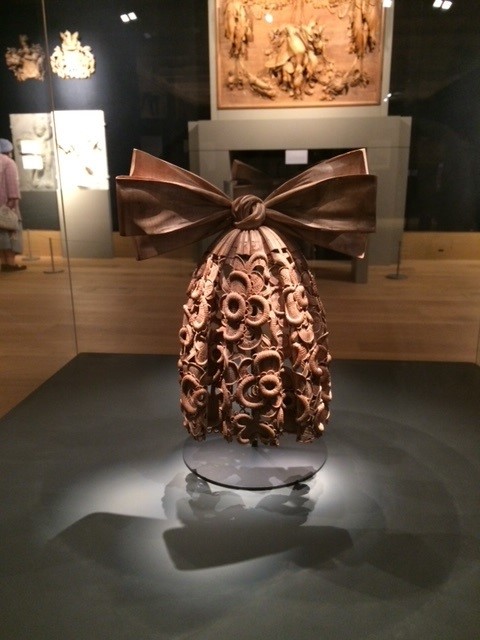
A brief note about avenue planting
In her 1992 article in Garden History, Sarah Couch talks about avenue planting falling out of favour by the 19th century, and that discussions about retaining old avenues or planting new ones were going on. According to Couch, avenues became the first conservationist issue at the end of the 18th century, and that by the middle of the 19th century people were not only restoring old avenues but planting new ones. This could explain why the Devonshire family would have wanted their tenants, the Tukes, to replant the lime avenues in the Grounds of Chiswick in 1901, rather than destroy them, if they had grown too large to prune.
I feel now that I have some answers to my question of why we have such grand lime tree avenues in Chiswick and I hope you have gained something through reading this.
To find out more about our magnificent trees, Members and Patrons are invited to join a Guided Tree Walk with Senior Gardener George Sydenham on 7 November. Book tickets.
Thanks to June Ford-Crush and Conor Bakhuizen for helping me with the tree measuring.
Sources used:
RHS Lindley Library
The Woodland Trust
David Jacques
Rosie Fyles
The Practice of Avenue Planting in the Seventeenth and Eighteenth Centuries. Article by Sarah M. Couch, in Garden History, volume 20, Autumn 1992